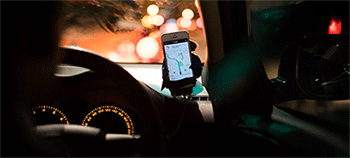
Is your Uber driver going too fast? Soon, you’ll be able to prove it.
Image: Noel Tock under Creative Commons license
Since 2009, Uber has taken off all around the world as the premier ride-sharing company. Now, your Uber experience may improve thanks to the company’s application of sensor technology via each driver’s smartphone.
A typical Uber experience asks the driver and passenger to rate each other after each drive. If the mark comes in unusually low, Uber can now investigate your claims by examining the driver’s journey with data pertaining to speed and erratic driving. The company aims to collect this data from the gyrometer in the driver’s phone and data from GPS and accelerometers.
This from Uber:
Gyrometers in phones can measure small movements, while GPS and accelerometers show how often a vehicle starts and stops, as well as its overall speed. If a rider complains that a driver accelerated too fast and broke too hard, we can review that trip using data. If the feedback is accurate, then we can get in touch with the driver.
An array of different sensory devices are used in your smartphone, allowing our phones to follow our commands and functions seamlessly. From the sensors in your screen that recognize touch to the voltage and current measurement sensors for battery utilization optimization, sensors are constantly responding to the ever-increasing demand for faster, cheaper, smaller, and more sensitive means to monitor the world around us.
Now these sensor technologies could help produce safer conditions on the road. If gyrometer results show that drivers are moving their phones while driving, Uber may offer mounts. If the accelerators pick up constant speeding conditions, Uber is ready to tell their drivers to curb their enthusiasm.


